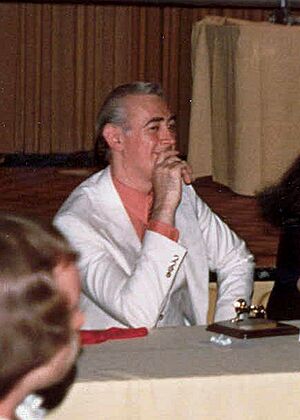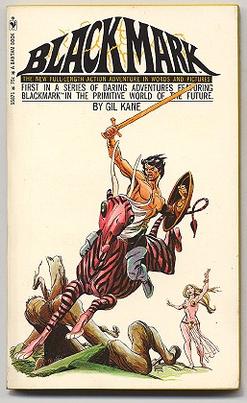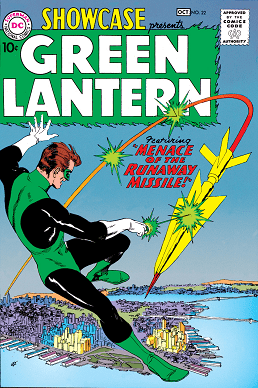Gil Kane facts for kids
Quick facts for kids Gil Kane |
|
|---|---|

Kane at the 1976 San Diego Comic-Con
|
|
| Born | Eli Katz April 6, 1926 Riga, Latvia |
| Died | January 31, 2000 (aged 73) Miami, Florida, U.S. |
| Nationality | American |
| Area(s) | Writer, Penciller |
| Pseudonym(s) | Scott Edward, Gil Stack, Stack Til, Stacktil, Pen Star, Phil Martell |
|
Notable works
|
Green Lantern Atom Spider-Man Blackmark Adam Warlock |
| Awards | National Cartoonists Society Award (1971, 1972, 1975, 1977) Shazam Award (1971) Inkpot Award (1975) |
Gil Kane (born Eli Katz; April 6, 1926 – January 31, 2000) was a famous American comics artist. He was born in Latvia and worked on comics from the 1940s to the 1990s. He drew for almost every major comics company and character.
Kane helped create modern versions of superheroes like Green Lantern and the Atom for DC Comics. He also co-created Iron Fist and Adam Warlock with Roy Thomas for Marvel Comics. He was a key artist for The Amazing Spider-Man comics. Kane also helped create early graphic novels, which are like long comic books. These included His Name Is... Savage (1968) and Blackmark (1971).
In 1997, Gil Kane was honored by being added to both the Will Eisner Comic Book Hall of Fame and the Harvey Award Jack Kirby Hall of Fame. These are very important awards in the comic book world.
Contents
Gil Kane's Early Life and Career
Gil Kane was born Eli Katz on April 6, 1926, in Latvia. His family was Jewish and moved to the U.S. in 1929. They settled in Brooklyn, New York City.
Kane went to high school at Manhattan's School of Industrial Art. But he left before finishing to work at MLJ Comics, which later became Archie Comics. He started working there in 1942 when he was 16. He said he didn't want to give up his job.
At first, Kane worked in production. He would add borders to pages and finish artwork. Soon after, he got a job with Jack Binder's agency. There, he started drawing comics professionally. He later returned to MLJ and got his first comic drawing jobs. He drew "Inspector Bentley of Scotland Yard" in Pep Comics and a whole issue of The Shield and Dusty.
His first known work was inking "The Counterfeit Money Code" in Zip Comics #14 (May 1941). He signed it "Gil Kane." He sometimes used other names like Stack Til or Pen Star.
In 1944, he started working for what would become Marvel Comics and DC Comics. He was an uncredited artist for Jack Kirby on a Sandman story in Adventure Comics #91. That same year, Kane joined the Army and served in World War II. He returned in December 1945 after 19 months.
In 1947, he worked for All-American Publications. He drew for the "Sandman" feature and "Wildcat" in Sensation Comics. In 1949, Kane began working with Julius Schwartz, an editor at National Comics (which became DC Comics). Kane drew for DC series like All-Star Western and The Adventures of Rex the Wonder Dog in the 1950s.
Creating Superheroes in the Silver Age of Comics
In the late 1950s, Gil Kane became a key artist during the Silver Age of Comic Books. This was a time when many classic superheroes were updated or created. He designed the modern Green Lantern. He drew most of the first 75 issues of this new Green Lantern comic.
Comics historian Les Daniels praised Kane's Green Lantern art. He said Kane's drawings showed "grace as well as strength," especially in the flying scenes. Kane and writer John Broome created many important stories for Green Lantern. They turned Hal Jordan's love interest, Carol Ferris, into Star Sapphire. They also introduced villains like Black Hand and created Guy Gardner.
Kane also helped create an updated version of the Atom with writer Gardner Fox. He also drew the young superhero team the Teen Titans. Kane and Marv Wolfman created an origin story for Wonder Girl in Teen Titans #22.
Kane also worked for Marvel Comics. He drew some Hulk stories in Tales to Astonish. He and writer/editor Stan Lee introduced the Abomination as a Hulk enemy. Kane later became the main artist for The Amazing Spider-Man. He also became Marvel's top cover artist in the 1970s. Kane's first Spider-Man story led to the death of supporting character George Stacy.
With writer Roy Thomas, Kane helped update Captain Marvel and created Adam Warlock. Kane and Thomas also co-created the martial arts superhero Iron Fist and Morbius the Living Vampire. Kane and writer Gerry Conway turned John Jameson into the Man-Wolf.
Pioneering New Comic Book Formats

Gil Kane also worked on special projects. He created, plotted, and drew two long comic stories. These were His Name Is... Savage (1968) and Blackmark (1971). Blackmark was a science-fiction and sword-and-sorcery paperback. It is considered one of the earliest examples of a graphic novel, which is a full-length comic book story.
Gil Kane's Later Career
In the 1970s and 1980s, Kane designed characters for TV shows. These included Hanna-Barbera and Ruby-Spears animated series like The Centurions. In 1974, he helped redesign the Marvel character the Cat into Tigra.
Three years later, he created the newspaper daily comic strip Star Hawks with writer Ron Goulart. This strip ran until 1981. He also drew covers for paperback books and record albums. He co-wrote the 1980 novel Excalibur! with John Jakes. He drew the John Carter, Warlord of Mars series for Marvel starting in 1977.
Kane was one of the artists for Justice League of America #200 (1982). He also worked on The Micronauts series. In the early 1980s, he drew for the Superman feature in Action Comics. He also contributed to the 1988 Superman animated TV series. Kane and Marv Wolfman updated the villain Brainiac in Action Comics #544 (1983).
He drew the early Green Lantern stories in Action Comics Weekly and the Nightwing cover for issue #627. He returned to drawing the Atom in the Sword of the Atom series. In 1989–1990, Kane illustrated a comic-book version of Richard Wagner's opera The Ring of the Nibelung.
In the 1990s, Kane drew for many publishers. He illustrated a comic series based on the film Jurassic Park. He also created the superhero Edge with writer Steven Grant. He drew several Superman stories for DC. He was one of the many artists who worked on Superman: The Wedding Album, where Superman married Lois Lane. He also worked with his former assistant Howard Chaykin on Batman: Legends of the Dark Knight and Superman: Distant Fires.
Kane also worked with writer Mark Waid on The Life Story of the Flash graphic novel. He even designed the set for a play called Lovely! in 1997.
His last full comic was Judgment Day: Aftermath #1 (1998). His final published comic art was a one-page illustration in Sin City: Hell and Back #4 (1999). His last completed work, the Green Lantern / Atom story, was published after his death in Legends of the DC Universe #28–29 (2000).
Death and Legacy
Gil Kane continued to work as an artist until he passed away on January 31, 2000. He died in Miami, Florida, from complications of lymphoma, a type of cancer.
Kane is remembered in several ways in comics. An homage to Kane and writer John Broome appears in In Darkest Night, a novel based on the Justice League animated series. It mentions the Kane/Broome Institute for Space Studies. The Broome Kane Galaxy in Green Lantern: Emerald Knights is also named after them. Writer Alan Moore even made Kane a character in the comic Judgment Day: Aftermath, which Kane himself illustrated.
While he was alive, Kane was also made a character in writer Mike Friedrich's story "His Name Is... Kane" in DC Comics' House of Mystery #180 (1969). In this story, drawn by Kane, a comic artist named Gil Kane kills his editor.
Kane's artwork has been reprinted many times. Marvel Comics released Marvel Visionaries Gil Kane in 2002. DC Comics published Adventures of Superman: Gil Kane in 2013.
Awards and Exhibitions
Gil Kane received many awards throughout his career. These include the National Cartoonists Society Awards for Comic Books: Story in 1971, 1972, and 1975. He also won the "Newspaper Strip: Story Strip Award" in 1977 for Star Hawks.
He received the comic book industry's Shazam Award for Special Recognition in 1971 for Blackmark, his paperback comics novel. He was also given an Inkpot Award in 1975. As mentioned, Kane was inducted into both the Eisner Award Hall of Fame and the Harvey Award Jack Kirby Hall of Fame in 1997.
Some of Kane's work was shown in the 1995 "KAPOW: A Showcase of Superheroes" exhibit. This exhibit was held at the Muckenthaler Cultural Center in Fullerton, California.
See also
 In Spanish: Gil Kane para niños
In Spanish: Gil Kane para niños


